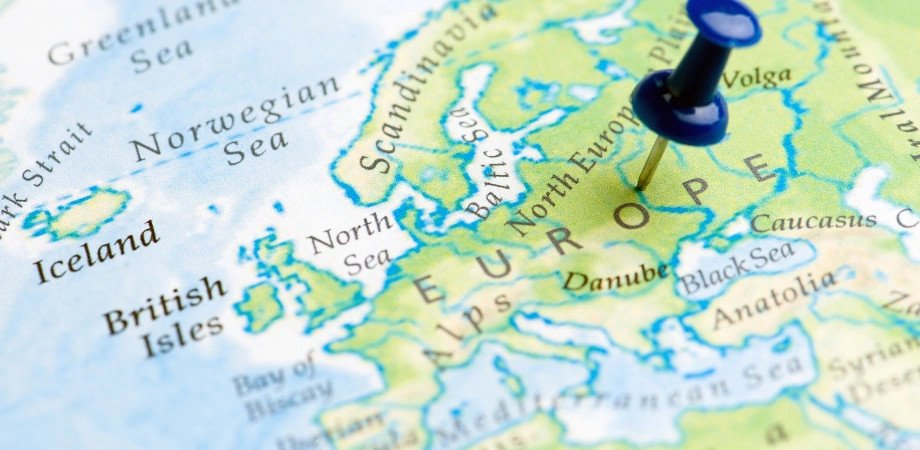The continent of Europe, a cornucopia of cultures, each narrated through the rich lexicon of its languages, stands as a testament to the Popular Languages in Europe. It is a geographic expanse where the symphony of sounds ranging from the rolling Rs of Romance languages to the melodious intonations of Slavic dialects resonates through the air. In this exploration of European linguistic diversity, attention is drawn not just to the spoken word, but to the profound cultural significance of language that permeates the very essence of European societies, highlighting the importance of Popular Languages in Europe.
Language in Europe is not merely a tool for communication but a testament to history’s ebb and flow across borders. The linguistic map of Europe is dotted with languages that have sailed seas, scaled mountains, and woven themselves into the tapestry of daily life in both bustling cities and quiet hamlets. Here, the concept of transcreation becomes pivotal, as it ensures that the exchange of ideas, values, and identity moves beyond mere translation to embody the cultural nuances of each region. This process exemplifies how the Popular Languages in Europe are not just a means of communication but a medium for cultural expression and preservation. Herein lies a multilingual Europe, proud of its heritage and continuing to adapt, showcasing an unparalleled complexity of tongues and traditions that move beyond the mere exchange of words to the exchange of ideas, values, and identity, all enriched by the nuanced art of transcreation.
The Linguistic Landscape of Europe
The European continent, known for its cultural and linguistic diversity, presents a complex mosaic of spoken tongues, including many of the Popular Languages in Europe. In this diverse setting, thriving multilingual societies in Europe harmoniously blend regional languages of Europe with those of wider communication, often incorporating the Popular Languages in Europe as key components of their linguistic repertoire. The European Union’s dedication to preserving and promoting the continent’s linguistic heritage plays a pivotal role in maintaining the vibrancy of its multiple languages, especially focusing on the promotion and integration of popular languages alongside regional dialects.
Europe’s Multilingual Nature
Europeans are often polyglots; the education systems across the continent encourage the learning of multiple European languages, including the popular ones, from an early age. This feature fosters multilingual societies in Europe and allows a person to navigate seamlessly through different linguistic environments, whether for business or leisure. The inclusion and emphasis on the popular languages alongside regional dialects enrich the linguistic tapestry of the continent. The prevalence of multilingualism, supported by the widespread teaching and use of popular languages in Europe, is not merely a societal trait but a cornerstone of European identity, underlining the continent’s diverse and inclusive cultural heritage.
Regional Dominance and Minority Languages
While some European languages like English, French, and German dominate on an international scale, the European fabric is also interwoven with a rich spectrum of regional and minority languages in Europe, alongside the Popular Languages in Europe. Each of these languages, from Basque to Sami, contributes to the cultural wealth of the region and speaks volumes about Europe’s history and heritage. The inclusion of popular languages in the dialogue about linguistic diversity further highlights the breadth of linguistic experience across the continent. The European Union acknowledges this vast linguistic tapestry and actively supports initiatives aimed at preserving these linguistic treasures, understanding the importance of both popular and lesser-spoken languages in maintaining the cultural and historical continuity of Europe.

Diving Into The Most Popular Languages in Europe
As we uncover the veins of communication that flow across the European continent, it becomes evident that linguistic diversity is more than a mere byproduct of history; it is the pulsing heart of Europe’s cultural identity. Europe’s linguistic landscape reveals a pattern of rich and dynamic heritage, encompassed within several broad linguistic families each holding a significant place both within the continent and on the global stage.
The Role of English in European Communication
Within the multifaceted tapestry of European languages, including the popular languages in Europe, the dominance of the English language stands out, shaping the continent’s commercial, scientific, diplomatic, and technological discourse. English, considered Europe’s lingua franca among the popular languages, functions as the predominant medium in fostering cross-border collaboration and integration, even in the aftermath of the United Kingdom’s departure from the European Union. Its role is pivotal in the context of the various popular languages spoken across the continent.
The prevalence of English in Europe, alongside other popular languages in Europe, serves not only as a functional tool for day-to-day communication but also as a critical facilitator for the language of European trade. It skillfully bridges the linguistic gaps between nations, propelled by its universal applicability, and enhances trade relations and economic partnerships, distinguishing itself among the spectrum of popular languages that enrich the European linguistic landscape.
French: The Language of Diplomacy and Culture
The French language in Europe stands not only as a beacon of cultural identity but also as the language of European diplomacy. Its history as a linguistic tool wielded by the aristocracy has established French as a diplomatic mainstay, synonymous with sophistication and clarity in international relations. The relevance of French extends to Francophonie, an international organization representing countries where French is spoken, demonstrating the global reach of this vital European language.
Exploring the realms of French culture, it’s evident that literature, art, and fashion have been profoundly shaped by the French vernacular.
Yet, the influence of the French language extends far beyond the borders of France. This tongue’s official status in various segments of the United Nations underscores its importance in the ongoing discourse of global diplomacy.
German: A Leading Language in Economic Affairs
As the powerhouse of Europe, Germany not only stands out for its economic might but also for the prominent role the German language plays in business. Being a pivotal business language in Europe, German is a critical component in the dynamics of European trade and industry. This language governs a myriad of exchanges across borders, cementing its status as a key asset within the potent German-speaking economies.
German in the European Union signifies more than a mere means of communication; it represents a bridge unifying diverse cultures under a robust economic framework. With Germany’s leadership, the language has become synonymous with precision, efficiency, and innovation—all qualities esteemed within the business community. The history of German as a conduit for economic discourse ensures that German-speaking countries are not just central players—they are also trendsetters in policy and economic development.
Spanish and Portuguese: Trails of Conquest and Trade
The Spanish language in Europe and the Portuguese language have played pivotal roles in shaping the cultural and economic landscape of the continent and beyond. Stemming from their shared lineage as Ibero-Romance languages, both have a rich history of influencing global affairs, marked by eras of conquest and the establishment of vast trade networks.
When considering the relevance of Spanish and Portuguese as European trade languages, it’s impossible to overlook their historical significance. Their dissemination during the Age of Exploration established enduring linguistic and economic connections between Europe, the Americas, and Asia, facilitating an early form of globalization.

Russian: Understanding Its Historical Significance
The Russian language remains a pivotal component of the cultural and political tapestry of Eastern Europe. As the largest and most influential language within the Slavic language family, its significance extends well beyond the geographical confines of Russia.
Historically, Russian has served as the administrative and cultural lingua franca across the expanse of the Tsarist Empire and later, the Soviet Union. Today, it continues to exert substantial Russian cultural influence on the post-Soviet states, finding its place in everything from governmental proceedings to educational curriculums. Russian is not just a language; it’s a medium through which a rich tapestry of history, art, and tradition is preserved and passed on to future generations.
Italian and Greek: Preserving the Classical Languages
In the panorama of European linguistic heritage, the Italian and Greek languages stand as profound pillars preserving the essence of classical antiquity. These languages, representing the Romance and Hellenic branches respectively, offer a gateway to understanding the underpinnings of modern Western civilization.
The Italian language heritage not only embodies the direct descendent of Latin, the lingua franca of the Roman Empire, but also envelops a rich tapestry of cultural and intellectual history. From the Renaissance that sculpted modern Western thought to the undying verses of Dante’s Divine Comedy, Italy champions the continuity of its linguistic virtues through literature, art, and academia.
Italian and Greek languages endure as the vessels of timeless knowledge, demonstrating Europe’s dedication to preserving its heritage. The responsibility to maintain and revere these languages goes beyond national borders and enters the realm of global cultural injunction, making the Romance and Hellenic languages not merely subjects of study but pillars of cultural identity.
Scandinavian Languages: Unity and Distinction
The rich tapestry of Scandinavian languages, an integral part of the popular languages in Europe, holds a special place within the linguistic map of Europe, exemplifying a rare blend of harmony and individuality. Danish, Swedish, and Norwegian belong to the Nordic language family, and while each possesses its own distinctive linguistic quirks and cultural nuances, they share a degree of mutual intelligibility that underscores a profound interconnectedness. This linguistic cross-comprehension paves the way for a unique cultural collaboration, strengthening the bonds between these Northern European nations and highlighting the importance of linguistic quality assurance in maintaining the clarity and cohesion of communication within the region.
In Scandinavia, the languages of Northern Europe are not only a means of everyday communication but also serve as a cornerstone for regional cooperation and socio-political unity. The Nordic Council, a prominent geopolitical entity, leverages these shared linguistic traits to foster policies that encourage wide-ranging collaboration in education, culture, and innovation, incorporating linguistic quality assurance practices to ensure the integrity and effectiveness of communication. These policies aim to promote the international stature of the Scandinavian languages, part of the popular languages in Europe, ensuring the balance between linguistic modernization and the preservation of each language’s singular attributes. Through these efforts, the Scandinavian languages exemplify how linguistic quality assurance and acknowledgment as popular languages can contribute significantly to the cultural and political cohesion of a region.



